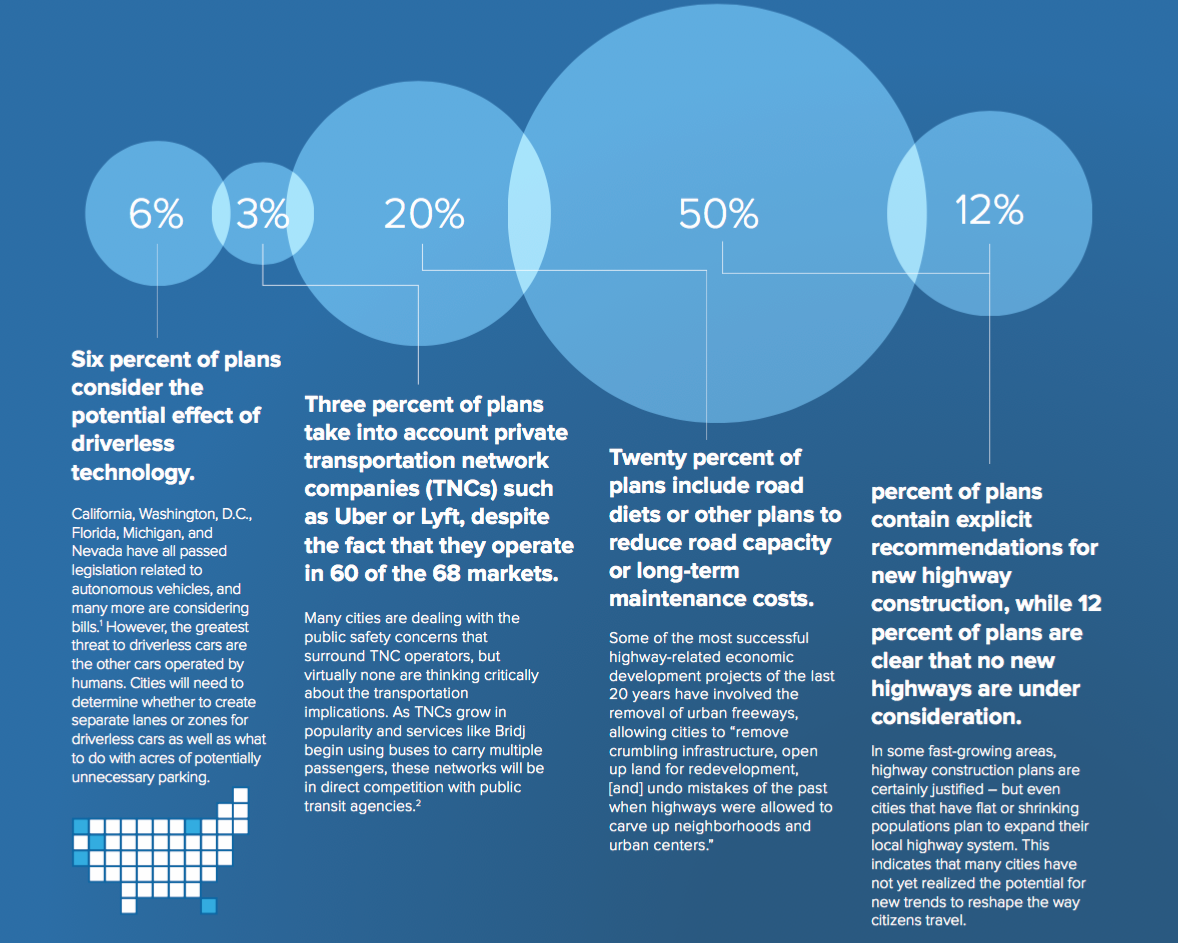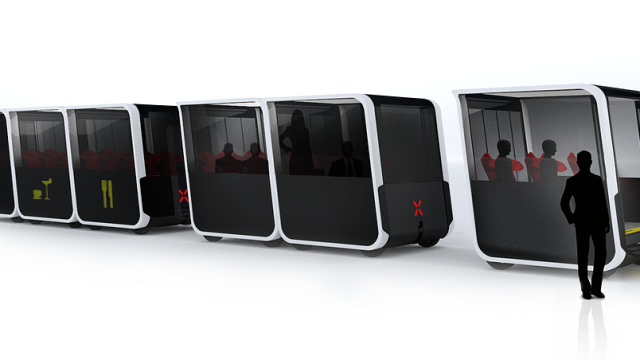Even though at least seven autonomous car programs swear they will be street-ready by 2020, the truth is that US cities are woefully unprepared for this reality. Only six per cent of the US’s largest cities include any language about self-driving vehicles in their long-range transportation plans.
That’s according to a new report from the National League of Cities which examines the transit plans of 68 large US cities (the 50 most populous overall, plus the largest cities in each state if they weren’t already included). Although legislation has been passed in several states allowing autonomous vehicles as part of pilot programs, cities themselves are lagging when it comes to incorporating those vehicles in any official way.
Most importantly, cities don’t have the land-use policies in place that will dictate where these cars can drive and if they must be separated (at first) from human-operated cars. And they aren’t thinking in a future-forward way about designing for the self-driving car society: building denser neighbourhoods, narrowing streets, and devoting much less real estate to parking.

OK, so maybe the self-driving tech isn’t quite there yet, one could argue — it doesn’t make sense to plan for something that’s still a bit vaporous. But that’s the other troubling part in the study: Only three per cent of these cities are planning around on-demand ride services — the study calls them private transportation network companies (TNCs) — like Uber and Lyft, which are operating in most of these cities right now. That’s a serious lack of foresight.
It’s the convergence of these two trends — autonomous cars and on-demand services — that will bring the most sweeping change to cities, the study argues. Instead of owning a car, we’ll summon a vehicle when we need to get somewhere, meaning we won’t need to allocate as much land or money to parking spaces. Public transit will also change to be more customised for riders’ needs at the moment, morphing into something like these modular pods which would not only shuttle humans around town but also handle freight and deliveries. This will all amount to far fewer vehicles on roads which means more streets space could be given back to pedestrians in form of parks and business. And this could all be happening by 2020 — if cities decide to get serious about preparing for the necessary changes now.
Of course, that’s not to say there aren’t some really inspiring examples of cities that are thinking ahead. Next City has a story about Lyft’s partnerships with transit agencies in Dallas and elsewhere to help people get to and from major transit hubs. And cities like Santa Monica are already experimenting with an on-demand bus service that will change its routes based on reservations from app users. It’s time for Australia to start making changes too.
